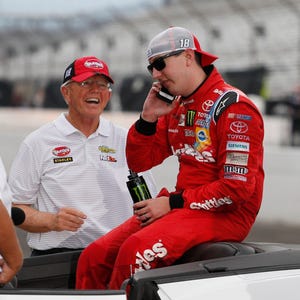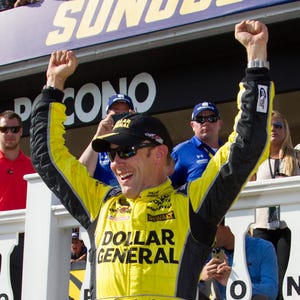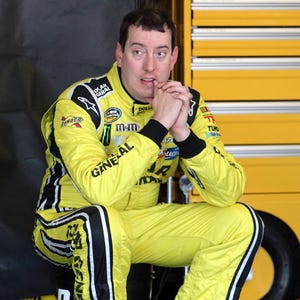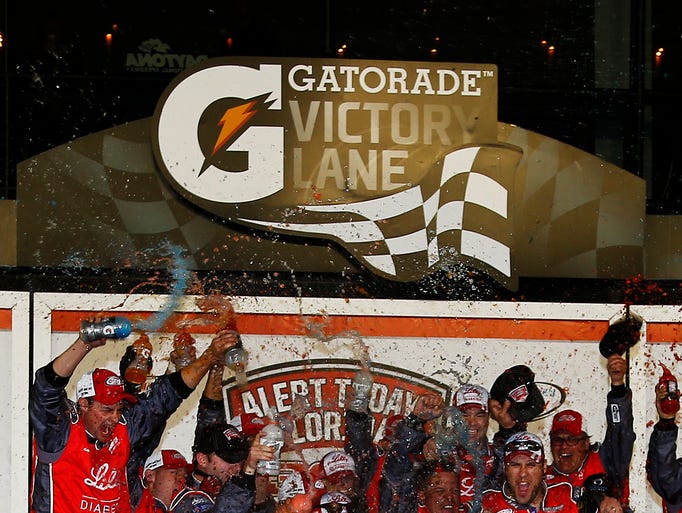Gluck: Pocono finish has NASCAR teams on alert – USA TODAY
LONG POND, Pa. – With NASCAR in the midst of a four-week stretch of tracks known for breeding a variety of pit strategies, it probably shouldn’t have been a surprise when drivers and teams got a fuel-mileage race Sunday at Pocono Raceway.
But it seemed to catch many of them off guard. NASCAR, which has appeared trigger-happy sometimes with caution flags late in races, allowed this one to stay green for the final 63 laps – resulting in about a dozen drivers running their fuel tanks dry.
“In the (officiating) booth up there, they turned the clock back to 1973 and let that thing play out a little bit and let everybody run out of gas,” Dale Earnhardt Jr. said. “That was pretty cool. It’s kind of like some of the older races where you just can’t count on them to throw cautions there at the end – and they didn’t today.”
NASCAR heads to Watkins Glen International and Michigan International Speedway over the next couple weeks, a pair of tracks also known for fuel strategy races.
But those only occur if no drivers crash or spin and NASCAR essentially swallows the whistle when it comes to debris cautions, which sometimes serve as a chance to reset the race and clean the track.
Debris cautions are similar to holding penalties in the NFL because they are flagged with a frequency that varies from week to week.
Sunday’s race, in that case, was sort of a wake-up call for teams who were used to having something bring out a late caution almost every week – thwarting any possible strategy play. Thanks to that trend, Brad Keselowski said teams have been trying to pit one or two laps before their fuel window opens with the expectation that a caution will help them make it to the end (since cars burn less gas while under caution).
That didn’t happen at Pocono, where Matt Kenseth took advantage of drivers running out of gas ahead of him to score his second win of the year and first career fuel-mileage victory.
“We were talking about it privately the other day, and I think it’s been two years since we’ve seen a race play out where there was a green‑flag pit stop (and) a full-length green-flag run at the end,” Keselowski said. “It’s nice to have one of those today, and sometimes that can create some of the best racing and best finishes, and I think that’s what we saw.”
It certainly made for a thrilling and dramatic ending, which ranked among the most exciting of the season. That could be the case again at Watkins Glen, where some teams start saving fuel on the pace laps and immediately work to get into their pit windows.
But Pocono also was a reminder of how much fuel mileage races can change the outcome for certain drivers. Just look at Joey Logano and Kyle Busch, who dominated the race but finished 20th and 21st, respectively, when they hit ‘E’.
That might not be a big deal right now, when most of NASCAR’s top drivers already are locked into the Chase for the Sprint Cup. But if a race like Pocono occurs in the Chase – perhaps in an elimination event – it could be the difference between being a champion and also-ran.
Expect crew chiefs and drivers to adjust accordingly for the playoffs if there’s another long green-flag run to close a race in the coming weeks.
“If you look back over the last five or six races, you always get a caution,” Kenseth crew chief Jason Ratcliff said. “… I’m shocked there wasn’t a caution, but I’m really glad there wasn’t one.”
Follow Gluck on Twitter @jeff_gluck
PHOTOS: 2015 Sprint Cup race winners







